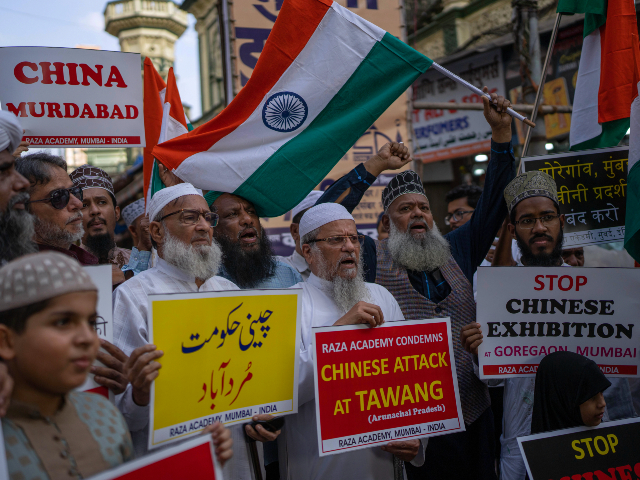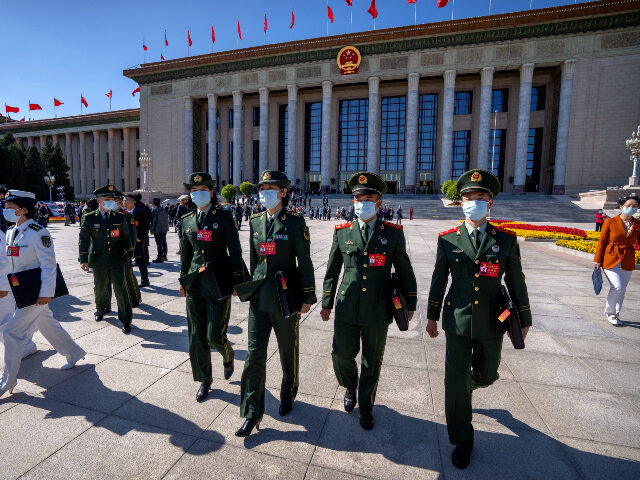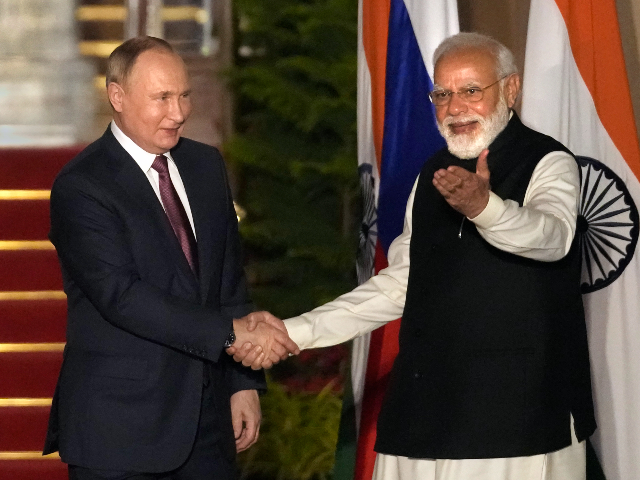China announced on Sunday that the People’s Liberation Army (PLA) staged “a series of tactical drills” in occupied Tibet, forcing soldiers to endure “an altitude of 4,600 meters under the harsh cold of -20 C [-4ºF]” to enhance combat capability on the Indian border.
The Communist Party’s boasts of renewed drills in occupied Tibet – which it referred to by the colonialist Mandarin name “Xizang” – follow a battle between Chinese and Indian troops on December 9 triggered, according to New Delhi, by hundreds of Chinese soldiers invading the country’s Arunachal Pradesh region. The Communist Party confirmed that a border dispute had occurred, leading to some injuries, but claimed that the Indians had violated Chinese sovereignty.
The border between China and India, two nuclear-armed countries, is one of the most volatile in the world. While soldiers along the border typically do not open fire when confronted – despite the rules of engagement being changed to allow firearms in 2020 – multiple brawls have occurred in the past two years in which soldiers attacked each other with rudimentary weapons including rocks, sticks, and clubs wrapped in barbed wire.
The deadliest of these skirmishes occurred in June 2020 along the border in Ladakh, India. On that occasion, Chinese PLA soldiers reportedly crossed into the Galwan Valley, an Indian territory, and began attacking Indian troops upon being confronted. The Galwan Valley brawl resulted in 20 deaths on the Indian side and about 40 for the Chinese, according to the Indian government. The Communist Party claimed to have lost only four PLA troops.
Many of the reported Galwan Valley deaths resulted from soldiers slipping off of steep cliffs of dying of hypothermia, suggesting poor training on the part of the Chinese.
The Chinese state newspaper Global Times appeared to address those concerns implicitly with its description of the PLA exercises in Tibet on Sunday. The propaganda outlet highlighted the use of live-fire drills featuring “long-range rocket artillery,” but also the troops’ exposure to high altitudes with low oxygen and low temperatures.
“Having held camp for several months deep in the Zangnan area, the southern part of Southwest China’s Xizang Autonomous Region (Tibet),” the Global Times narrated, “a brigade of the PLA Xizang Military Command recently carried out the exercise at an altitude of 4,600 meters under the harsh cold of -20 C [-4ºF].”
The Global Times article on the exercises mentioned the brawl between Chinese and Indian troops on December 9, but did not directly relate the two issues, simply abruptly transitioning to discussing China’s recent invasion of India and blaming it on “Indian troops illegally cross[ing]” into China.
The Chinese government has offered few details into the Arunachal Pradesh clash this month. The Indian Army, in contrast, emphasized that no participant appeared seriously hurt in the situation and condemned the Chinese government for crossing the border. Indian media, which is allowed to operate much more freely than China’s government propaganda outlets, estimated that between 200 and 600 Chinese soldiers had violated the border.

Indians hold placards as they shout slogans during a protest against China in Mumbai, India, Tuesday, Dec. 13, 2022. Soldiers from India and China clashed last week along their disputed border, India’s defense minister said Tuesday, in the latest violence along the contested frontier since June 2020, when troops from both countries engaged in a deadly brawl. (AP Photo/Rafiq Maqbool)
Retired Indian General MM Naravane, who served as chief of army staff during the Galwan Valley battle, emerged in public last week to accuse the Chinese PLA of “hooliganism” and resorting to “ridiculous” and “prehistoric” weapons to intimidate China.
“Is that the level PLA has gone down to? Hooliganism and streetfighting? Or they are a professional 21st-century army?” he asked on a podcast with Asian News International. “On one side they try to show their technological prowess, on the other side they are coming with barbed wire clubs. It is ridiculous.”
China will reportedly follow up the exercises in Tibet with joint drills on the other side of the country with ally Russia this week. Beijing and Moscow are scheduled to begin “Maritime Cooperation 2022” exercises in the East China Sea on December 21, featuring some of both countries’ most advanced warships and signaling to the world political unity and military cooperation between them. The South China Morning Post reported this week that China had sent “at least nine” of its warships in the direction of the East China Sea prior to the exercises, though it did not confirm if they would all participate in the event.
The primary diplomatic result of the exercises has been to intimidate Japan, which lies opposite China on the East China Sea and is still technically at war with Russia – the two never resolved territorial disputes dating back to World War II and have thus not signed a peace treaty yet. Secondarily, however, China can use the exercises to send a message to India, which relies on Russia for much of its military equipment, that Moscow will likely support it against India in any territorial dispute.
Indian Prime Minister Narendra Modi’s first call to a foreign head of state following the December 9 border skirmish was to Russian leader Vladimir Putin. The Indian government said in a readout of the conversation that Modi and Putin agreed to review “several aspects of the bilateral relationship, including energy cooperation, trade and investments, defense and security cooperation, and other key areas.”
The repeated clashes with China on the border have become a political problem for Modi. The Indian National Congress, the country’s largest opposition party, accused Modi over the weekend of being overly friendly to China, allowing too many Chinese companies to import into India or do business on Indian soil when the country presents a military threat to India.
“You have met the top Chinese leadership an unprecedented 18 times and recently shook hands with Xi Jinping in Bali,” Congress noted in a statement this weekend. “China launched an incursion into Tawang shortly thereafter and continue to unilaterally alter the border situation. Why are you not taking the nation into confidence?”
Modi’s External Affairs Minister S. Jaishankar responded on Monday.


COMMENTS
Please let us know if you're having issues with commenting.